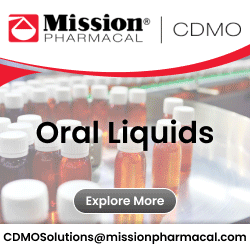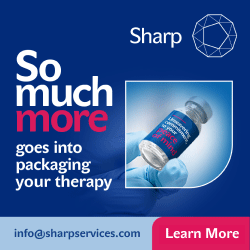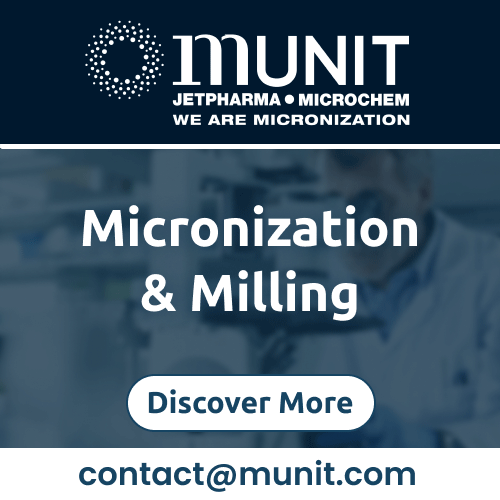Overview of the pharmaceutical serialization & aggregation services offered by co-packaging companies which serve as commercial packaging solutions
Q1. What is pharmaceutical serialization?
During pharmaceutical serialization, each saleable unit of a prescription drug product, at the primary packaging line or serialization line level, is assigned a unique serial number or serialization code linked to information about the product's origin, batch, and expiration date via the company’s serialization equipment.
The problem of counterfeit drugs and drug adulteration has been a worldwide issue for decades. Fueled by Internet sales, unsecured physical and cyber pharmaceutical supply chains, and minimal punishments, counterfeit prescription drugs have become an exploding industry, with an estimated market worth $75 billion a year, worldwide.
The pharmaceutical packaging industry has been working tirelessly to secure the supply chain, through the development and implementation of pharma serialization standards in over 50 markets. Tracking counterfeit products, providing regulatory compliance, branding & consumer protection, and tracing capability throughout the pharmaceutical supply chain is enabled via serialization and its corresponding packaging equipment.
It is not just about generating unique serial numbers using the serialization equipment, but also about maintaining those identifications to provide visibility and full traceability within the pharmaceutical supply chain. It requires collaborative action from partners throughout the supply chain for accurate recording, tracking, and managing of data as the product moves from manufacturer, to distributor, to the dispensing point.
Therefore, it is increasingly important for contract packagers to look at serialization as an opportunity for increased consumer safety and business gains rather than an obstacle. If contract packagers can achieve and implement successful serialization lines and traceability at all levels, activities of the counterfeit drug market can be curbed.
Contract packagers gain the following benefits, amongst various others, by adopting serialization systems:
- Product Authentication
- Coordination of Supply Chain Data
- Efficient Recall Process
- Revenue Growths
- Brand Protection
- Compliance with federal governments
- Consumer Safety
Q2. What is aggregation in serialization, and why is it important for pharmaceutical packaging service providers?
While pharmaceutical serialization & aggregation are complementary processes, they differ in a few ways. In the pharma serialization world, aggregation is commonly understood as capturing and maintaining parent-child relationships between different packaging levels of a product. Secondary packing lines housing secondary packaged assemblies, that hold together the individual units of a good (primary packaged goods), undergo pharmaceutical aggregation-serialization.
While pharma serialization in itself adds a unique identifier to each product in a serialization line setup, an aggregation solution adds codes to the outside of secondary medical packaging all the way up to cases and pallets. Not only does this ease the minds of contract packagers, but it meets requirements in the Drug Supply Chain Security Act (DSCSA) and the EU Falsified Medicines Directive (FMD). The key end-user benefit of aggregation removes the need to open the case and scan all of the individual saleable units.
You can scan one code and understand exactly what is in the whole shipment, every case, bundle, individual carton, etc., making it challenging for counterfeit products to enter the market. Aggregate bottles, cartons, bundles, cases, pallets, etc. can be obtained via aggregation. Serialization is compulsory, but aggregation is being increasingly implemented on a voluntary basis as it makes the distribution chain as well as stock level management more efficient.
Obvious advantages of aggregation can be seen in the pharmaceutical supply chain. Aggregation allows product receivers to scan one code and understand what is in the whole shipment, it simplifies the rework & recall process, and accelerates time to market, thereby simplifying the movement and handling of drug products. Despite the many benefits, the pharmaceutical industry has been slow to adopt aggregation.
The financial investment needed to achieve aggregation can be prohibitive, overall packaging equipment effectiveness can be adversely impacted, and de-aggregation can be time consuming. However, pharmaceutical serialization and aggregation go hand-in-hand, and companies should start adopting aggregation solutions when they start acquiring packaging equipment and implementing end-to-end serialization solutions, to save both time and money.
Q3. What is track & trace in pharmaceutical serialization & aggregation and what are its elements?
In the context of the pharmaceutical supply chain, track and trace refers to the process of determining a drug’s current and past locations via pharmaceutical serialization and aggregation methods. When track and trace is correctly implemented, a drug can be tracked throughout the supply chain and traced back up the supply chain upon return or recall.
End-to-end serialization solutions impart knowledge about the physical location of a particular product within a supply chain at any point in time. Full track and trace involves the implementation of both serialisation and aggregation solutions into packaging lines (including secondary packing lines), and corporate IT systems. Healthcare companies leverage track and trace pharma end-to-end serialization solutions, to fulfil global compliance regulations and to protect patients from counterfeit drugs.
The pharmaceutical track and trace system, generally operates according to the principles stated below:
1. The printing of DataMatrix onto every drug unit produced or imported using packaging equipment at the serialization line stage.
- A data matrix is a type of 2D barcode consisting of black and white cell arrays with square or rectangular modules. The data matrix can store information in very small areas and is the most preferred type of data code where reliability is required.
2. Providing the tracking and tracing of drug units with DataMatrix.
3. The sharing of files that include the hierarchical relation between the transportation unit and the drug units among the stakeholders through a package tracking system.
4. The notification of action types of the drug units and their DataMatrix information through web services.
A track & trace system based on GS1 standards, adopted by India, proved an ideal end-to-end serialization solution and aggregation solution for the Indian pharmaceutical market accounting for 10 % of the world's production. It not only gave the ability to accurately identify pharmaceuticals at various packaging levels, but also provided the ability to collect and store product information that would help identify its origin.
Furthermore, track & trace systems adhere to a five level model:
Level 1: Defines the layout of the system and manages pharmaceutical serialization and aggregation in the production process.
Level 2: Same as level one for production chain level.
Level 3: Same as level one for production plant level.
Level 4: Same as level one for production at the contract packager company level.
Level 5: Defines the layout of and manages the serialization and aggregation system at an external level, chiefly to allow external access to data (drug agencies, logistics operators, hospitals, etc.)
Q4. How does aggregation explore the pharmaceutical supply chain?
Aggregation impacts pharma serialization projects and packaging lines, including secondary packaging lines, throughout a manufacturers’ operations and the overall supply chain. Aggregation lets you scan the case’s barcode to determine the identity of all the contents within the case. This is one of the reasons that aggregation can facilitate the material handling aspects of serialized projects in warehouse environments and create efficiencies across the entire pharmaceutical supply chain.
By applying, capturing and associating serial numbers in the packaging hierarchy, supply chain participants are able to infer the contents of a container (i.e. shipper case or pallet) with one scan of a barcode. Therefore, aggregation is a burgeoning method of data collection aimed at simplifying inventory and the pharmaceutical supply chain. While it is still in its infancy, the technique can help combat counterfeiting, theft, inefficiencies, and confusion as a whole.
Q5. How does aggregation connect the dots between track-and-trace systems and pharma serialization?
The pharmaceutical industry defines pharmaceutical serialization and aggregation as processes in which identification information about a product or case of products is collected and built upon at every stage throughout the pharmaceutical supply chain.
While relatively straightforward and simple, this information-gathering process builds valuable links between units and full cases of products, documenting the packaging process, using serialization equipment, and quickly informing any subsequent handlers of exactly which units they will find in any given case. In this way, aggregation solutions help to connect the dots between serialization and track-and-trace operations.
However, if your data is not accurate, customer service problems may arise regularly. Aggregation-triggered problems are very complex and costly to resolve. Odds are, you will be forced to take a good product back and destroy it because its serial number does not match the aggregation data.
Aggregation data is the only thing that will ease the burden of compliance for downstream trading partners in a serialized world, but if the data is not consistently accurate, aggregation data will become a curse for everyone and the “Achilles’ Heel” of supply chain operations.
Aggregation is looked at as central to the DSCSA “interoperable supply chain” mandate for 2023. This is the next major hurdle of regulatory compliance. The exact requirements have not been finalized, but it is certain to have aggregated products at the core to facilitate information gathering and better traceability up and down the supply chain.
All Suppliers

















 Sharp is a global leader in pharmaceutical packaging and clinical trial supply services.
Sharp is a global leader in pharmaceutical packaging and clinical trial supply services.











